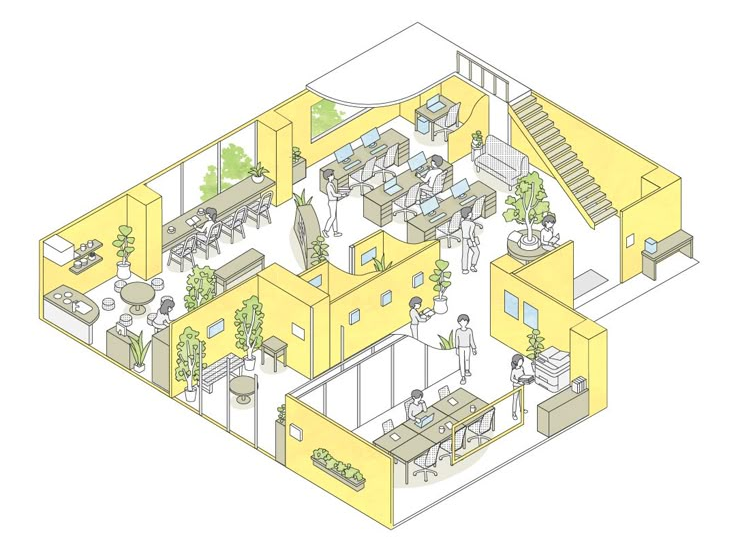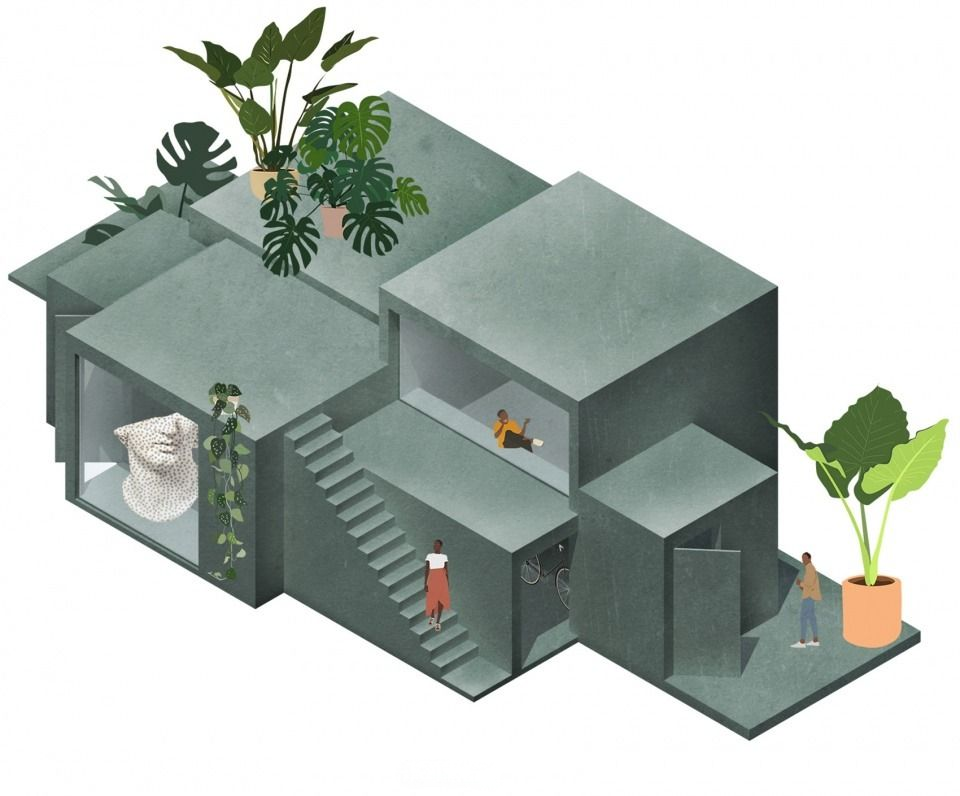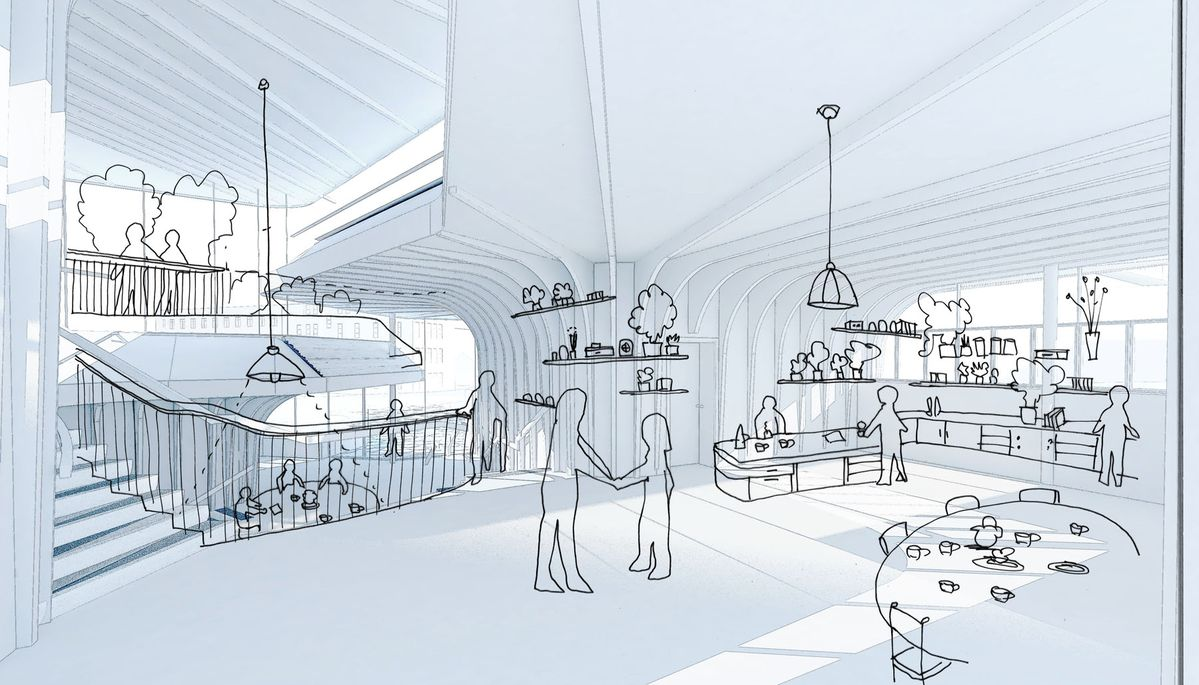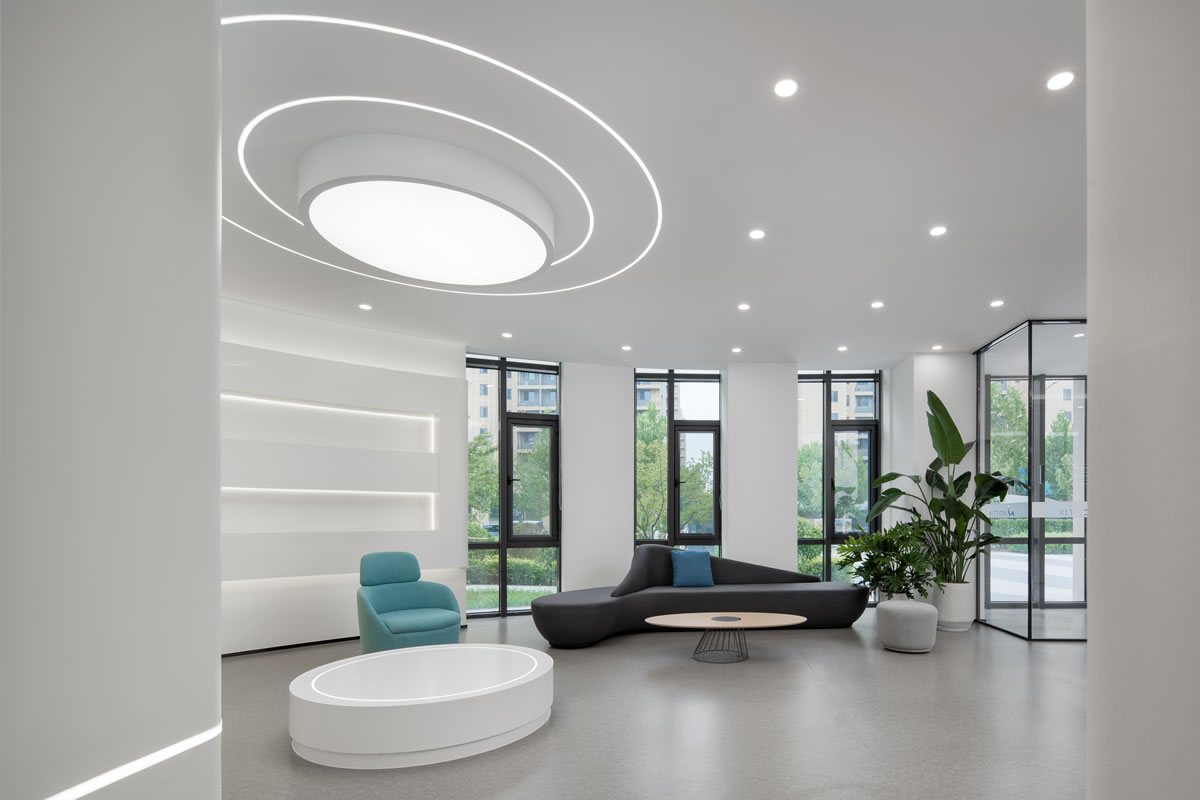
COPYRIGHT © GLEAM SPACES
POWER BY:MINGTU
In the fast-paced modern workplace, how to design office space that not only meets functional needs, but also promotes employee health, stimulates team vitality and creativity? This has become a hot topic in office design.
Scientific research shows that the impact of office environment on employees' physical and mental health, as well as work efficiency, is beyond imagination. So, what does an ideal office space look like?

Scientific evidence+employee participation: dual engines for a successful office environment
Experts from the Konstanz Future Work Laboratory point out that an efficient office environment needs to be based on science and value employee participation.
The focus of design is shifting from "space efficiency" to "user experience", with acoustic privacy, indoor environment, lighting, and ergonomics becoming key factors. Flexible and diverse spaces meet diverse needs and activate team innovation. Change requires employee participation, strengthens sense of belonging, and allows space to grow with the team.
Office as Life: The New Role of Space
At the design forum, experts proposed that offices should go beyond functionality and become a stage for communication and personal growth.
Daily rituals such as rest arrangements, work transitions, mindfulness exercises, etc. are crucial for team emotions and stress relief. Space should provide opportunities for expression and growth, becoming an 'energy field'.

Healing Space: The Secret to Promoting Physical and Mental Health
The concept of "healing architecture" emphasizes the positive impact of space on health. Designer Charleen Grigo advocates for precise interventions such as lighting, sound environment, and material selection to enhance the physical and mental health of employees.
Natural light, dynamic lighting, high-quality sound environment and materials effectively alleviate stress and enhance adaptability. In the hybrid office mode, such space is particularly important.
Psychological Health: Dual Protection of Space and Culture
Psychological health depends not only on spatial design.
Psychologists point out that daily work structures such as trusting leadership and team psychological security are equally crucial. Space and culture need to collaborate to form a health promotion system. A well-designed focus and leisure area is crucial for mental health. Organizations should view health as a shared responsibility and provide a supportive and communicative atmosphere.
Art Empowerment: A New Way to Inspire Creativity
Art curator Viviane M ö rmann believes that office art is not decoration, but a catalyst for inspiring change.
Art activities and interactive installations co created by employees trigger team dialogue and growth. Art unlocks creativity, stimulates critical thinking, and enables teams to bravely face challenges.

Sound and light environment: creating a pleasant working atmosphere
The sound and light environment profoundly affect the work experience.
Composer Walter Werzowa shared that the appropriate use of music and sound can enhance happiness and concentration. Sunlight, biological dynamic lighting, and circadian rhythm lighting enhance emotions and efficiency. Diversified meeting places, such as rest areas and cafes, enrich the office atmosphere.
Rejecting templating: Space is a manifestation of organizational identity
Architect Peter Ippolito emphasized that office space is an expression of organizational identity, requiring flexibility and promoting diverse communication.
Standardized templates are difficult to cope with changes, and the success space comes from dialogue and iteration with users. The concept of sustainability and durability has become the new standard for office design.
Conclusion: Office Space, Designed for Life
The ideal office environment is a multi sensory, people-oriented complex that enhances health, stimulates creativity, and strengthens social bonds. It reserves space for personal expression and team experience, viewing it as a "living organism" that constantly grows and evolves. An office is designed not only for work, but also for daily life.



